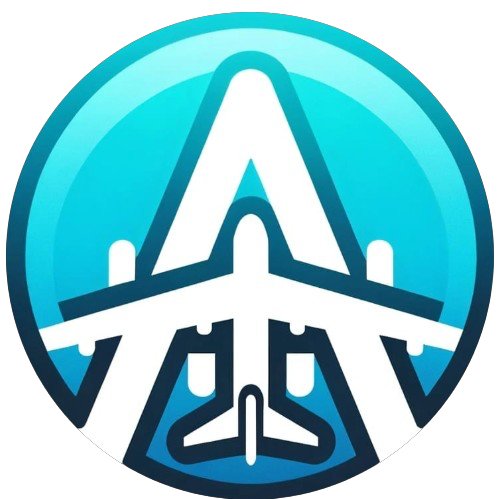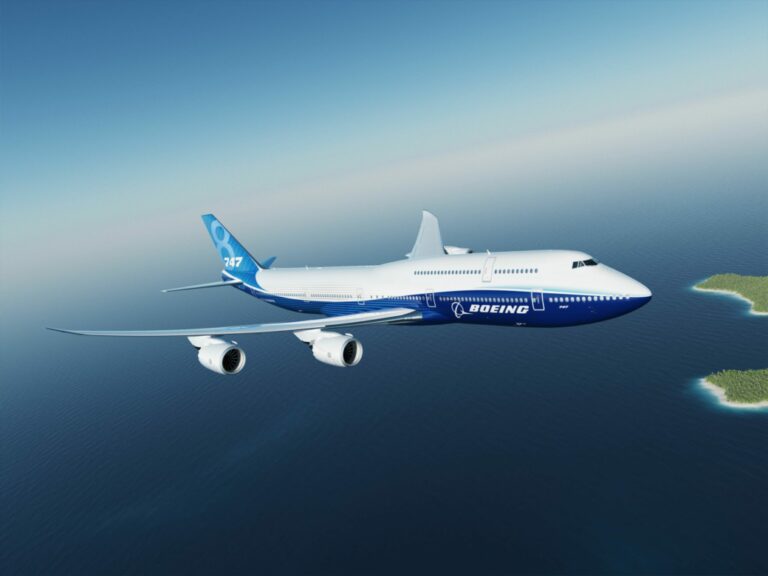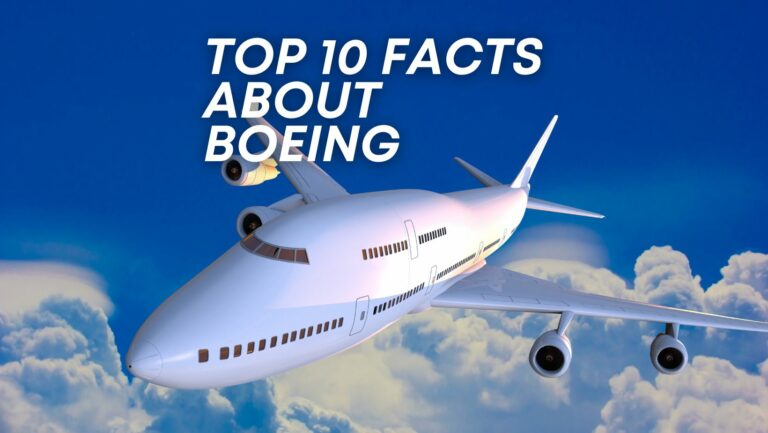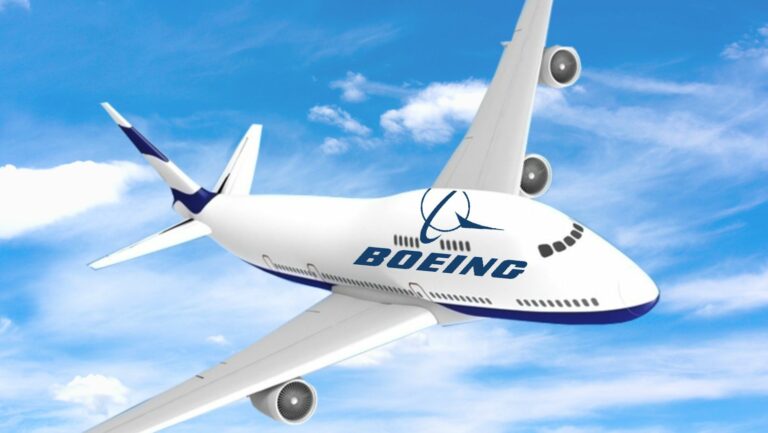Boeing 737 Variants, History and Specifications
Boeing 737 is a narrow-body aircraft that has left an indelible mark on the aviation industry as the best-selling airliner of all time. Produced at Boeing‘s renowned Everett and Renton factories in Washington, the Boeing 737 was designed as a supplement to the Boeing 727, specializing in short-haul and less-traveled routes. This twinjet marvel maintains the fuselage width of the larger 707, accommodating six abreast seating, but distinguishes itself with the efficiency of two underwing turbofans, a departure from its four-engine predecessor.
The story of the Boeing 737 began in 1964 and was brought to life in April 1967 with the maiden flight of the first Boeing 737-100. Shortly thereafter, in February 1968, it began service with Lufthansa, forever changing the landscape of modern air travel. Since then, this remarkable aircraft has evolved into a family of twelve distinct variants, categorized into four generations:
- The Original Generation with the 737-100 and 737-200;
- The Classic Generation featuring the 737-300, 737-400, and 737-500;
- The Next Generation (NG) comprising the 737-600, 737-700, 737-800, and 737-900ER;
- The MAX Generation, introducing us to the 737 MAX 7, MAX 8, and MAX 9
Boeing 737 variants
737 Original Generation

737-100
Boeing 737-100, the pioneering member of the 737 aircraft family, made its debut in February 1968 with Lufthansa as its launch customer. A limited-edition aircraft, only 30 were ordered, 22 by Lufthansa, 5 by Malaysia–Singapore Airlines, and 2 by Avianca. The first 737-100, initially Boeing’s prototype, found a remarkable second life with NASA, operating for three decades. In its early days, the 737-100’s thrust reversers had some teething problems, causing issues during landing. Boeing swiftly introduced an innovative solution in 1968, with improved thrust reversers, longer nacelle/wing fairings, and enhanced flap systems, significantly boosting its payload, range, and short-field performance. This inaugural 737-100 paved the way for the enduring success of the Boeing 737 series, showing the spirit of aviation innovation.
737-200
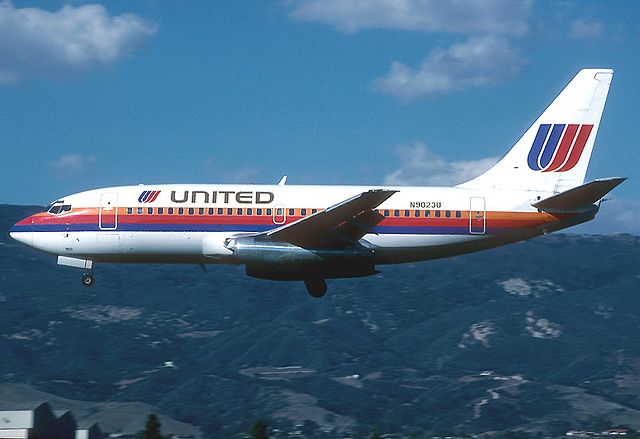
The Boeing 737-200, a version of the original 737-100 with the fuselage extended, was introduced thanks to an order from United Airlines in 1965 and made its commercial debut with United in April 1968. Costing approximately US$4.0 million in 1968, equivalent to $33.7 million today, the 737-200 evolved with time. In the realm of military and specialized use, the U.S. Air Force employed 19 737-200s for navigator training, with some transformed into passenger transports and a radar test bed. Notably, Alaska Airlines utilized gravel kits to enable the 737-200 to operate from rugged, unpaved runways, a feature that still finds relevance in remote regions of Canada. As of September 2023, around 50 Boeing 737-200s remain in active service, demonstrating the enduring adaptability of this aircraft model.
737-200 Advanced
The 737-200 Advanced, starting with aircraft #135, brought numerous improvements, including enhanced aerodynamics, automatic wheel brakes, more powerful engines, increased fuel capacity, resulting in a remarkable 15% boost in payload and range compared to the original 737-200 and 737-100 models. Boeing also offered versatile variants like the 737-200C (Combi) for quick conversion between passenger and cargo roles and the 737-200QC (Quick Change).
737 Classic Generation
737-300

In 1979, Boeing has begun a project to revive the 737, giving birth to the ‘new generation’ of Boeing airplanes, later recognized as the 737 Classic Generation. The 737-300, the first aircraft in this generation of the 737 family was unveiled at the 1980 Farnborough Airshow. Competing with rivals like the MD-80, MD-90, and Airbus A320, the 737-300 brought about substantial improvements.
Guided by Boeing engineer Mark Gregoire, the 737-300 featured a transformative partnership with CFM International, resulting in the high-bypass turbofan engine, CFM56-3B-1. This engine delivered significant fuel efficiency gains and reduced noise, albeit with engineering challenges due to the 737’s design. The fuselage was extended by 9 feet 5 inches, accommodating 149 passengers. Several wing and aerodynamic enhancements were introduced, while the flight deck benefited from the EFIS (Electronic Flight Instrumentation) system.
The 737-300’s inaugural flight took place on February 24, 1984, and it successfully underwent a comprehensive nine-month certification program. For heightened performance, the 737-300 was later equipped with Aviation Partners’ winglets, known as the -300SP (Special Performance). This model set the stage for the 737 Next Generation series, exemplifying Boeing’s commitment to innovation and progress in aviation.
737-400
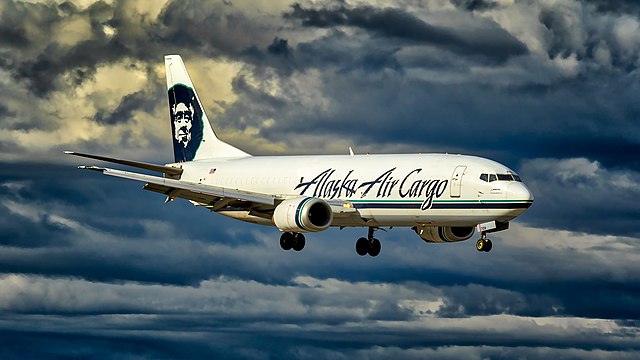
In 1985, Boeing introduced the 737-400 to bridge the gap between the 737-300 and the 757-200. This model, launched in June 1986, extended the fuselage by 10 feet (3.0 m), boosting passenger capacity to 188. To accommodate these changes, the aircraft required a tail bumper to prevent tailstrikes during take-off and a reinforced wing spar. The 737-400 made its inaugural flight on February 19, 1988, completing a rigorous seven-month, 500-hour flight-testing phase before entering service with Piedmont Airlines in October of the same year.
737-500
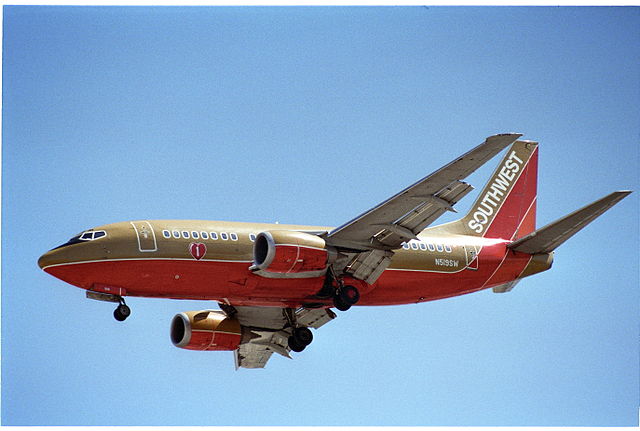
In 1987, the Boeing 737-500 was introduced as a modern and direct replacement for the aging 737-200. The journey began when Southwest Airlines placed an order for 20 aircraft, and on June 30, 1989, the 737-500 took to the skies for the first time. The certification process involved 375 flight hours, with a single prototype.
Southwest Airlines celebrated the delivery of the first 737-500 on February 28, 1990. This aircraft, part of the 737 Classic series, built on the innovations of its predecessors, making it a viable choice for longer routes with fewer passengers. The fuselage of the 737-500 was extended by 1 foot 7 inches, accommodating up to 140 passengers. Airlines had the option of choosing between modern glass and older-style mechanical cockpit arrangements. The use of the CFM56-3 engine translated to a remarkable 25% increase in fuel efficiency compared to the older 737-200’s P&W engines.
However, the 737-500 has faced accelerated retirement due to its smaller size, with a service life of 21 years compared to the 24-year service life of the -300. Unlike the -300, which found some demand for freighter conversion, no such demand materialized for the -500. Ultimately, the 737-500 made way for the 737-600 within the Next Generation series, although the -600 did not achieve the same level of success in terms of total orders as its predecessor, the -500.
737 Next Generation (NG)
The 737 Next Generation, often referred to as the 737NG, encompasses the primary models 737-600/700/800/900 series, along with extended range -700ER/900ER variants, within the Boeing 737 family. This transformative series has been in production since 1996 and officially introduced in 1997, accumulating a remarkable total order count of 7,097 aircraft, with 7,031 delivered as of May 2019.
737-600

In March 1995, Scandinavian Airlines (SAS) took the lead by launching the Boeing 737-600, the smallest aircraft of the Next-Generation series. The inaugural plane found its way to SAS in September 1998. In total, 69 of these aircraft were manufactured, all without winglets, with the final one delivered to WestJet in 2006. The 737-600 took the place of the 737-500 and shares similarities with the Airbus A318.
737-700
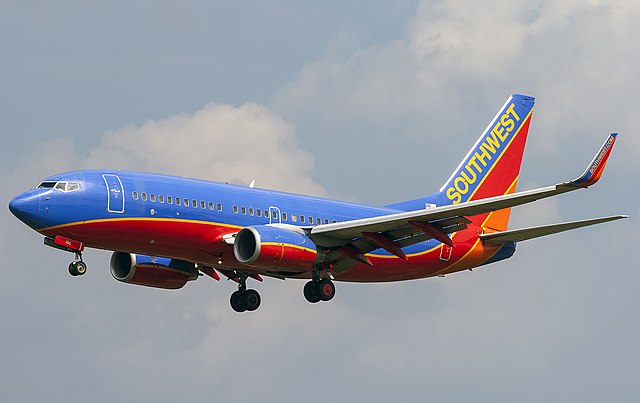
The Boeing 737-700, the pioneering variant of the Next-Generation series, took flight in November 1993 with an initial order of 63 aircraft. Designed to accommodate 126 passengers in a two-class or 149 passengers in a one-class configuration, this model received its inaugural delivery to launch customer Southwest Airlines in December 1997. The 737-700 replaced the 737-300 and found itself in direct competition with the Airbus A319.
The 737-700 also introduced a convertible version, the 737-700C, with the capability to convert passenger seats to cargo space through a large left-side door. The United States Navy adopted this variant, naming it the C-40 Clipper.
Additionally, the 737-700ER (Extended Range) made its debut on January 31, 2006. This model featured the fuselage of the 737-700 along with the wings and landing gear of the 737-800, offering a range similar to the Airbus A319LR. In a typical two-class configuration, the 737-700ER can accommodate up to 126 passengers.
737-800

The Boeing 737-800, introduced as an elongated version of the 737-700, made its debut on September 5, 1994. This versatile model can comfortably seat 162 passengers in a two-class setup or accommodate up to 189 passengers in a high-density, one-class layout. Hapag-Lloyd Flug, now known as TUIfly, proudly served as the launch customer, receiving the first 737-800 in April 1998.
The 737-800 seamlessly replaced the aging 737-400 and the venerable 727-200 among U.S. airlines. It also stepped in to fill the void left by Boeing’s decision to retire the MD-80 and MD-90 aircraft following the merger with McDonnell Douglas. The 737-800 is now among the most widely used narrowbody aircraft, making it a key competitor to the Airbus A320.
737-900

In 1997, Boeing unveiled the 737-900, a significant addition to the Next-Generation family. The first flight took place on August 3, 2000. While it preserves the maximum takeoff weight (MTOW), fuel capacity, trading range for payload, and exit configuration of the -800, the -900’s design limits its seating capacity to around 177 in a two-class layout or 189 in a high-density, one-class setup. The launch customer, Alaska Airlines, welcomed its first delivery on May 15, 2001.
Taking the legacy forward, Boeing introduced the 737-900ER (Extended Range), the newest and largest variant within the 737NG generation. This version incorporated an additional pair of exit doors and a flat rear pressure bulkhead, allowing for a seating capacity of 180 passengers in a two-class arrangement or up to 220 passengers in a one-class configuration. The -900ER was introduced to address the range and passenger capacity needs once fulfilled by the discontinued 757-200 and to compete head-on with the Airbus A321.
737 Max Generation

The Boeing 737 MAX marks the latest evolution in the Boeing 737 family, encompassing the MAX 737-7/8/9/10 series and the high-capacity MAX 200 variant. This innovative series offers four main variants, typically seating 138 to 230 passengers and boasting impressive ranges of 3,215 to 3,825 nautical miles (5,954 to 7,084 km; 3,700 to 4,402 mi). The MAX 7, MAX 8 (including the denser, 200-seat MAX 200), and MAX 9 step in to replace the 737-700, -800, and -900 models, respectively. A further extension, the 737 MAX 10, has also been introduced.
The central development here was re-engineering with the high-bypass CFM LEAP-1B engine. This ambitious project took flight on January 29, 2016, with FAA certification granted on March 8, 2017. The first delivery, a MAX 8, occurred on May 6, 2017, marking a significant milestone. As of January 2019, the series has secured an impressive 5,011 firm orders.
However, in March 2019, two tragic crashes led to the global grounding of the 737 MAX series. Boeing suspended production from January 2020, resuming it in May 2020. In November 2020, the FAA cleared the MAX for a return to service, but necessary repairs and airline training programs need approval. Expectations are high for passenger flights in the U.S. to resume before the year’s end, with Brazilian low-cost airline Gol being the first worldwide to do so on December 9, 2020.
737 MAX 7
The Boeing 737 MAX 7, a shortened version of the MAX 8, was initially based on the 737-700 but brought substantial improvements to the table. With the capacity to fly 1,000 nautical miles (1,900 km; 1,200 mi) farther and accommodate two additional seat rows, all while boasting 18% lower fuel costs per seat, this variant redefined efficiency. The redesign incorporates elements like the 737-8 wing and landing gear, a pair of over-wing exits (in place of the single-door configuration), an extended aft fuselage by 46 inches (1,200 mm), and a longer forward fuselage by 30 inches (760 mm). Structural enhancements and various systems and interior modifications were also implemented to support the increased length.
While the launch operator, Southwest Airlines, initially anticipated the MAX 7’s entry into service in January 2019, they later deferred their orders until 2023–2024. The MAX 7 took the reins from the 737-700, promising to carry 12 more passengers and extend its range by 400 nautical miles (740 km; 460 mi) compared to its competitor, the Airbus A319neo, all while offering a 7% reduction in operating costs per seat.
737 MAX 8
The Boeing 737 MAX 8, the inaugural member of the 737 MAX family, introduced a longer fuselage compared to the MAX 7. Boeing reached a significant milestone when they finalized the firm configuration for the 737 MAX 8 on July 23, 2013. Malindo Air conducted the aircraft’s first commercial flight on May 22, 2017, ushering in a new era. The MAX 8 seamlessly took over from the 737-800 and went head-to-head with its competitor, the Airbus A320neo.
Further expanding the MAX 8’s horizons, Boeing unveiled the 737 MAX 200 in September 2014. This higher-capacity version was tailored for single-class layouts accommodating up to 200 passengers, courtesy of slimline seats that required an additional pair of exit doors. Notably, the MAX 200 promised to be 20% more cost-efficient per seat, featuring a 5% reduction in operating costs compared to the MAX 8. Upon entering service, it aimed to be the most efficient narrow-body aircraft on the market. Ryanair, with 135 orders in hand, proudly presented the first MAX 200 in mid-November 2018, configured with 197 seats. Its inaugural flight took place on January 13, 2019, and entered service in April 2019.
737 MAX 9
The Boeing 737 MAX 9, an extended version of the MAX 8, soared into the limelight with a substantial order of 201 aircraft in February 2012. This remarkable aircraft had its roll-out event on March 7, 2017, and completed its maiden flight on April 13, 2017, setting a course for aviation innovation. Achieving certification by February 2018, it marked a pivotal moment in aviation history. Lion Air Group, as the launch customer, celebrated the arrival of the first MAX 9 on March 21, 2018, subsequently entering service with Thai Lion Air. In a captivating development, the 737 MAX 9 gracefully succeeded the 737-900 and engaged in fierce competition with the Airbus A321neo.
737 MAX 10
The Boeing 737 MAX 10, introduced in 2016, marks a substantial advancement in passenger capacity. With room for up to 230 passengers in a single-class setup or 189 in a two-class configuration, it outshines its competitor, the Airbus A321neo. Achieving this feat involved a modest 66-inch fuselage extension while retaining the MAX 9’s wings and CFM Leap 1B engine. In June 2017, the MAX 10 took flight with over 240 orders and commitments, solidifying its place in the market. Noteworthy for its cost-efficiency, the MAX 10 was designed to compete with the A321neo, offering a predicted 5% reduction in trip and seat costs. This innovative aircraft was unveiled in November 2019, with its first flight scheduled for 2020. Boeing explored the possibility of parallel development with a 757 replacement, indicative of their forward-thinking approach.
In the late 2010s, Boeing delved into the development of the Boeing New Midsize Airplane (NMA), featuring two variants seating 225 or 275 passengers. This aimed to address the same market segment as the 737 MAX 10 and the Airbus A321neo. During this period, the concept of a Future Small Airplane (FSA) was also considered. However, in January 2020, Boeing shifted its focus to ensure the return of the 737 MAX to service and announced a new approach to future projects, setting aside the NMA temporarily.
Boeing 737 History
The Boeing 737 is a narrow-body aircraft that has been in production since 1967. It was first imagined in 1964 as a short-range, low-cost option for airlines. The first variant, the 737-100, made its maiden voyage in 1967. Since then, the 737 has become the best-selling commercial aircraft in aviation history, with over 10,000 units produced as of 2023.

Over the years, the 737 has undergone several upgrades and modifications to meet the changing demands of the aviation industry. In 1980, the 737 Classic series was introduced, which included the -300, -400, and -500 variants. These models were upgraded with CFM56-3 turbofans and offered 110 to 168 seats.
In 1997, the 737 Next Generation (NG) series was introduced, which included the -600, -700, -800, and -900 variants. The NG series featured updated CFM56-7 turbofans, a larger wing, and an upgraded glass cockpit. The NG series could seat 108 to 215 passengers, depending on the variant.
The most recent variant, the 737 MAX, was introduced in 2017. The MAX series features new LEAP-1B engines, advanced avionics, and improved aerodynamics. However, the MAX series has been plagued with controversy due to two fatal crashes in 2018 and 2019, leading to a worldwide grounding of the aircraft type until December 2020.
Despite the setbacks, the 737 remains a popular choice for airlines around the world, with over 4,600 orders for the MAX series alone as of 2023.
Boeing 737 Specifications
Boeing 737 Original Generation Specifications
| 737-100 | 737-200 | |
|---|---|---|
| Role | Narrow-body airliner | Narrow-body airliner |
| First flight | April 9, 1967 | August 8, 1967 |
| Introduction | February 10, 1968 | April, 1968 |
| Cockpit crew | 2 | 2 |
| Exit limit | 124 | 136 |
| Length | 94 ft (29 m) | 100 ft 2 in (30.53 m) |
| Wing Span | 93 ft (28 m) | 93 ft (28 m) |
| Wing area/Sweep angle | 979.9 sq ft (91.04 m2)/ 25° sweep | 979.9 sq ft (91.04 m2)/ 25° sweep |
| Height | 37 ft (11 m) | 37 ft (11 m) |
| Width | 148 inches (3.8 m) | 148 inches (3.8 m) |
| Cargo Capacity | 650 cu ft (18 m3) | 875 cu ft (24.8 m3) |
| MTOW | 110,000 lb (50,000 kg) | 128,100 lb (58,100 kg) |
| OEW | 62,000 lb (28,000 kg) | 65,300 lb (29,600 kg) |
| Fuel capacity | 4,720 US gal (17,900 L) | 5,970 US gal (22,600 L) |
| Speed | Mach 0.745 – Mach 0.82 (796–876 km/h) | Mach 0.745 – Mach 0.82 (796–876 km/h) |
| Range | 1,540 nmi (2,850 km) | 2,600 nmi (4,800 km) |
| Ceiling | 37,000 ft (11,300 m) | 37,000 ft (11,300 m) |
| Engine (x2) | Pratt & Whitney JT8D-7/-9/-15/-17 | Pratt & Whitney JT8D-7/-9/-15/-17 |
| Thrust (x2) | 14,000 lbf (62 kN) | 14,000 lbf (62 kN) |
| 737-100 | 737-200 |
Boeing 737 Classic Generation Specifications
| 737-300 | 737-400 | 737-500 | |
|---|---|---|---|
| Role | Narrow-body airliner | Narrow-body airliner | Narrow-body airliner |
| First flight | February 24, 1984 | February 19, 1988 | June 30, 1989 |
| Introduction | December, 1984 | October, 1988 | February 28, 1990 |
| Cockpit crew | 2 | 2 | 2 |
| Exit limit | 149 | 188 | 145 |
| Length | 102–120 ft (31–37 m) | 102–120 ft (31–37 m) | 102–120 ft (31–37 m) |
| Wing Span | 94 ft 9 in (28.88 m) | 94 ft 9 in (28.88 m) | 94 ft 9 in (28.88 m) |
| Wing area/Sweep angle | 979.9 sq ft (91.04 m2)/ 25° sweep | 979.9 sq ft (91.04 m2)/ 25° sweep | 979.9 sq ft (91.04 m2)/ 25° sweep |
| Height | 36 ft 6 in (11.13 m) | 36 ft 6 in (11.13 m) | 36 ft 6 in (11.13 m) |
| Width | 148 inches (3.8 m) | 148 inches (3.8 m) | 148 inches (3.8 m) |
| Cargo Capacity | 882–1,373 cu ft (25.0–38.9 m3) | 882–1,373 cu ft (25.0–38.9 m3) | 882–1,373 cu ft (25.0–38.9 m3) |
| MTOW | 133,500–150,000 lb (60,600–68,000 kg) | 133,500–150,000 lb (60,600–68,000 kg) | 133,500–150,000 lb (60,600–68,000 kg) |
| OEW | 70,440–76,760 lb (31,950–34,820 kg) | 70,440–76,760 lb (31,950–34,820 kg) | 70,440–76,760 lb (31,950–34,820 kg) |
| Fuel capacity | 5,311 US gal (20,100 L) | 5,311 US gal (20,100 L) | 5,311 US gal (20,100 L) |
| Speed | Mach 0.745 – Mach 0.82 (796–876 km/h) | Mach 0.745 – Mach 0.82 (796–876 km/h) | Mach 0.745 – Mach 0.82 (796–876 km/h) |
| Range | 2,060–2,375 nmi (3,815–4,398 km) | 2,060–2,375 nmi (3,815–4,398 km) | 2,060–2,375 nmi (3,815–4,398 km) |
| Ceiling | 37,000 ft (11,300 m) | 37,000 ft (11,300 m) | 37,000 ft (11,300 m) |
| Engine (x2) | CFM56-3 series | CFM56-3 series | CFM56-3 series |
| Thrust (x2) | 20,000–23,500 lbf (89–105 kN) | 20,000–23,500 lbf (89–105 kN) | 20,000–23,500 lbf (89–105 kN) |
| 737-300 | 737-400 | 737-500 |
Boeing 737 Next Generation (NG) Specifications
| 737-600 | 737-700 | 737-800 | 737-900 | |
|---|---|---|---|---|
| Role | Narrow-body airliner | Narrow-body airliner | Narrow-body airliner | Narrow-body airliner |
| First flight | January 22, 1998 | February 9, 1997 | July 31, 1997 | August 3, 2000 |
| Introduction | September, 1998 | December, 1997 | April 1988 | May 15, 2001 |
| Cockpit crew | 2 | 2 | 2 | 2 |
| Exit limit | 149 | 149 | 189 | 220 |
| Length | 102–138 ft (31–42 m) | 102–138 ft (31–42 m) | 102–138 ft (31–42 m) | 102–138 ft (31–42 m) |
| Wing Span | 112 ft 7 in (34.32 m) | 112 ft 7 in (34.32 m) | 112 ft 7 in (34.32 m) | 112 ft 7 in (34.32 m) |
| Wing area | 1,341.2 sq ft (124.60 m2) | 1,341.2 sq ft (124.60 m2) | 1,341.2 sq ft (124.60 m2) | 1,341.2 sq ft (124.60 m2) |
| Height | 41 ft (12 m) | 41 ft (12 m) | 41 ft (12 m) | 41 ft (12 m) |
| Width | 148 inches (3.8 m) | 148 inches (3.8 m) | 148 inches (3.8 m) | 148 inches (3.8 m) |
| Cargo Capacity | 720–1,826 cu ft (20.4–51.7 m3) | 720–1,826 cu ft (20.4–51.7 m3) | 720–1,826 cu ft (20.4–51.7 m3) | 720–1,826 cu ft (20.4–51.7 m3) |
| MTOW | 144,500–187,700 lb (65,500–85,100 kg) | 144,500–187,700 lb (65,500–85,100 kg) | 144,500–187,700 lb (65,500–85,100 kg) | 144,500–187,700 lb (65,500–85,100 kg) |
| OEW | 80,200–98,495 lb (36,378–44,677 kg) | 80,200–98,495 lb (36,378–44,677 kg) | 80,200–98,495 lb (36,378–44,677 kg) | 80,200–98,495 lb (36,378–44,677 kg) |
| Fuel capacity | 6,875–7,837 US gal (26,020–29,670 L) | 6,875–7,837 US gal (26,020–29,670 L) | 6,875–7,837 US gal (26,020–29,670 L) | 6,875–7,837 US gal (26,020–29,670 L) |
| Speed | Mach 0.785 (453 kn; 838 km/h; 521 mph) Cruise | Mach 0.785 (453 kn; 838 km/h; 521 mph) Cruise | Mach 0.785 (453 kn; 838 km/h; 521 mph) Cruise | Mach 0.785 (453 kn; 838 km/h; 521 mph) Cruise |
| Range | 2,935–3,010 nmi (5,436–5,575 km) | 2,935–3,010 nmi (5,436–5,575 km) | 2,935–3,010 nmi (5,436–5,575 km) | 2,935–3,010 nmi (5,436–5,575 km) |
| Ceiling | 41,000 ft (12,500 m) | 41,000 ft (12,500 m) | 41,000 ft (12,500 m) | 41,000 ft (12,500 m) |
| Engine (x2) | CFM56-7 series | CFM56-7 series | CFM56-7 series | CFM56-7 series |
| Thrust (x2) | 20,000–27,000 lbf (89–120 kN) | 20,000–27,000 lbf (89–120 kN) | 20,000–27,000 lbf (89–120 kN) | 20,000–27,000 lbf (89–120 kN) |
| 737-100 | 737-200 |
Boeing 737 MAX Specifications
| MAX 7 | MAX 8 | MAX 9 | MAX 10 | |
|---|---|---|---|---|
| Role | Narrow-body airliner | Narrow-body airliner | Narrow-body airliner | Narrow-body airliner |
| First flight | March 16, 2018 | January 29, 2016 | April 13, 2017 | June 18, 2021 |
| Introduction | Expected in 2024 | May 22, 2017 | March 21, 2018 | Expected in 2025 |
| Cockpit crew | 2 | 2 | 2 | 2 |
| Exit limit | 172 | 200 | 220 | 230 |
| Length | 116 ft 8 in (35.56 m) | 129 ft 8 in (39.52 m) | 138 ft 4 in (42.16 m) | 143 ft 8 in (43.8 m ) |
| Wing Span | 117 ft 10 in (35.92 m) | 117 ft 10 in (35.92 m) | 117 ft 10 in (35.92 m) | 117 ft 10 in (35.92 m) |
| Wing area | 1,370 sq ft (127 m2) | 1,370 sq ft (127 m2) | 1,370 sq ft (127 m2) | 1,370 sq ft (127 m2) |
| Height | 40 ft 4 in (12.29 m) | 40 ft 4 in (12.29 m) | 40 ft 4 in (12.29 m) | 40 ft 4 in (12.29 m) |
| Width | 148 inches (3.8 m) | 148 inches (3.8 m) | 148 inches (3.8 m) | 148 inches (3.8 m) |
| Cargo Capacity | 1,543–1,814 cu ft (43.7–51.4 m3) | 1,543–1,814 cu ft (43.7–51.4 m3) | 1,543–1,814 cu ft (43.7–51.4 m3) | 1,543–1,814 cu ft (43.7–51.4 m3) |
| MTOW | 177,000–194,700 lb (80,300–88,300 kg) | 177,000–194,700 lb (80,300–88,300 kg) | 177,000–194,700 lb (80,300–88,300 kg) | 177,000–194,700 lb (80,300–88,300 kg) |
| OEW | 99,360 lb (45,070 kg) | 99,360 lb (45,070 kg) | 99,360 lb (45,070 kg) | 99,360 lb (45,070 kg) |
| Fuel capacity | 6,853 US gal (25,940 L) | 6,853 US gal (25,940 L) | 6,853 US gal (25,940 L) | 6,853 US gal (25,940 L) |
| Speed | Mach 0.785 (453 kn; 838 km/h; 521 mph) Cruise | Mach 0.785 (453 kn; 838 km/h; 521 mph) Cruise | Mach 0.785 (453 kn; 838 km/h; 521 mph) Cruise | Mach 0.785 (453 kn; 838 km/h; 521 mph) Cruise |
| Range | 3,800 nmi (7,040 km) | 3,500 nmi (6,480 km) | 3,300 nmi (6,110 km) | 3,100 nmi (5,740 km) |
| Ceiling | 41,000 ft (12,500 m) | 41,000 ft (12,500 m) | 41,000 ft (12,500 m) | 41,000 ft (12,500 m) |
| Engine (x2) | CFM LEAP-1B | CFM LEAP-1B | CFM LEAP-1B | CFM LEAP-1B |
| Thrust (x2) | up to 29,300 lbf (130 kN) | up to 29,300 lbf (130 kN) | up to 29,300 lbf (130 kN) | up to 29,300 lbf (130 kN) |
| MAX 7 | MAX 8 | MAX 9 | MAX 10 |
Boeing 737-Other Variants
Boeing 737 Business Jet

The Boeing 737 Business Jet, also known as BBJ, is a variant of the Boeing 737 airliner designed for private and corporate use. The BBJ offers a spacious cabin, high-speed internet, and customizable interiors that can include bedrooms, showers, and conference areas.
The BBJ is available in several variants, including the BBJ1, BBJ2, and BBJ MAX. The BBJ1 is based on the 737-700 airliner and has a range of up to 6,000 nautical miles. The BBJ2 is based on the 737-800 airliner and has a range of up to 5,500 nautical miles. BBJ MAX is based on the 737 MAX airliner and has a range of up to 7,000 nautical miles.
The BBJ1 and BBJ2 have a cabin size of 807 square feet and 1,120 square feet, respectively. The BBJ MAX has a cabin size of 883 square feet. The cabin can be customized to include a variety of features, such as a master bedroom, lounge area, dining area, and conference room.
The BBJ is equipped with CFM56-7 engines, which provide a maximum thrust of 27,300 pounds. The aircraft has a maximum takeoff weight of 171,000 pounds and can reach a maximum speed of 527 knots.
Boeing Business Jet has been a popular choice among private and corporate clients, including heads of state, celebrities, and business executives. Some notable BBJ clients include the governments of China, Bahrain, and Qatar, as well as Oprah Winfrey and Steven Spielberg.
Overall, the Boeing 737 Business Jet offers a luxurious and comfortable flying experience for those who can afford it.
Boeing 737 Military Variants
The Boeing 737 has been adapted into several military variants, including transport and surveillance aircraft.
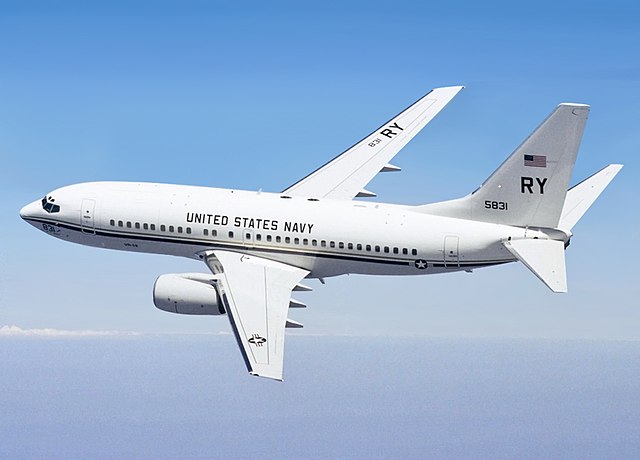
The C-40 Clipper, a military iteration of the Boeing 737 Next Generation, serves the crucial purpose of transporting both cargo and passengers. Widely employed by the United States Navy, Air Force, and Marine Corps, this versatile aircraft has distinctive variants tailored to specific roles. The Navy’s C-40A variant is aptly named the “Clipper,” adding a touch of individuality. In contrast, the USAF’s C-40B/C variants officially remain unnamed, highlighting a subtle difference.
Moreover, the C-40B variant takes on a specialized role within the US Air Force, primarily designated for VIP transport. On the other hand, the C-40C variant fulfills a different mission, specifically geared towards efficient cargo transport.
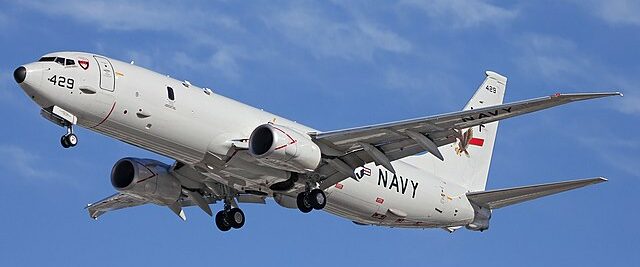
Another military variant worth mentioning is the P-8 Poseidon, a maritime patrol and reconnaissance aircraft meticulously developed for the United States Navy. Derived from the 737-800ERX, the P-8 is not only equipped with anti-submarine and anti-surface warfare capabilities but also boasts electronic intelligence gathering capabilities. According to Boeing, the P-8 has two distinct variants: The P-8I and the P-8A. Solely operated by the Indian Navy, the P-8I stands in contrast to the P-8A Poseidon, which finds utility in the fleets of the US Navy, the UK’s Royal Air Force, the Royal Australian Air Force, and the Royal Norwegian Air Force.
In tandem with these variants, there have been proposals for additional military adaptations of the 737. In the 1990s, Boeing put forth a proposal for a 737-based airborne early warning and control (AEW&C) aircraft, though it was ultimately rejected in favor of the Northrop Grumman E-2 Hawkeye. More recently, Boeing has advocated for a 737-based tanker aircraft, dubbed the KC-737, aiming to compete with the Airbus A330 MRTT. Nevertheless, as of 2023, no orders have materialized for this particular variant.
